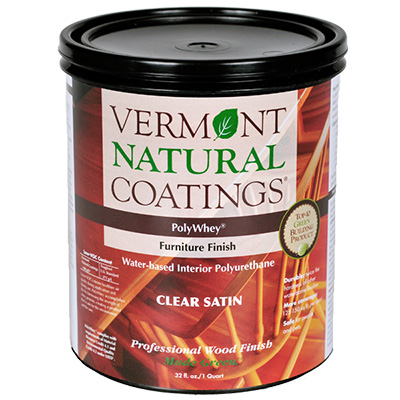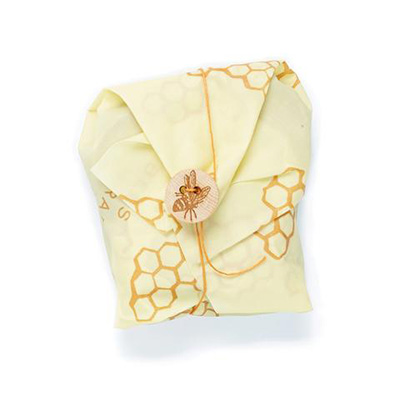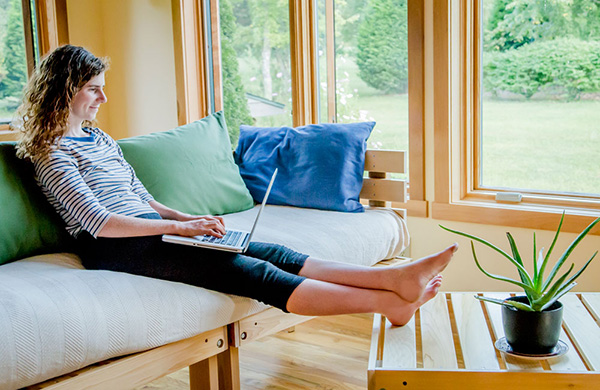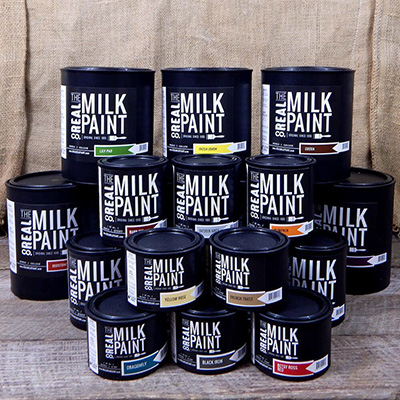
Next time you’re doing a home improvement project, look to green products to reduce your exposure to toxic chemicals. Find more at GreenPages.org.
A big part of what makes a house a home are the efforts made to create a space that’s nurturing and safe to everyone there. The products we buy for our home are part of those efforts, but we can mistakenly purchase conventionally manufactured products that aren’t truly made with our home’s health in mind. Instead, many housewares are unsustainably made with precious natural resources, treated with toxic chemicals, and made by underpaid workers. But shifting our buying habits in support of businesses that meet high environmental and social sustainability standards can change that. Here are a few alternatives to common toxic products for your green abode.
Floor finishes & Carpets
Like paints, conventional floor finishes and stains including lacquer, shellac, varnish, and sealers often contain VOCs and phthalates, the latter of which are commonly used in vinyl flooring.
Carpets are often treated with chemical compounds like formaldehyde, phthalates, and benzyl benzoate for stain-, fire- and moth- resistance. VOCs are often emitted both from carpets and gluing installation.
Green Alternative: Healthy Finishes & Sustainable Carpet

Vermont Natural Coatings makes PolyWhey Floor Finish, which replaces toxic ingredients with natural whey protein derived from cheese making and can give the finish you’re looking for without the toxic gases. Customers can opt for versions for heavy- or light-traffic floors, depending on where it’s being applied.
While some homeowners may opt for the sleek appeal of wood or tile flooring, carpeting does provide benefits such as insulation, noise reduction and can even be a safer choice for active little ones. Organic and Healthy Inc., offers an array of natural and eco-friendly carpets and rugs including organic wool with hemp or jute backing, and treated with no pesticides or stain-proofing chemicals.
Plastic wraps
Plastics contain BPA, DEHP, and other chemicals that are known endocrine disruptors. When heat is applied, these chemicals can leach into food and increase exposure to health risks.
Green Alternative: Waxed Cloth

Bees Wrap has brought another old-time tradition back to the modern day. The company produces organic cotton wraps coated with a mix of beeswax, jojoba oil, and tree resin. The mixture creates pliable sheets people can use to seal in the freshness of their food and its best qualities are being washable, reusable, and compostable!
Living Room Furniture
Beyond its practical use, furniture can bring personality, style, and warmth to a home. Unfortunately, many furniture companies manufacture with an unsustainable, built-to-break mentality, leading to waste, and discount furniture is often made by underpaid workers. Some companies also treat furniture with flame retardants, which have been associated with reproductive, developmental, and neurological health risks as well as cancer.
Green Alternative: Sustainable Furniture

For cozy and peace-inspiring home additions, check out Carolina Morning’s selection of body-friendly furniture made with organic cotton, wool, kapok fiber, buckwheat hulls, beeswax, and flax seed. The company has also ditched plastic packaging for deliveries.
Nonstick Cookware
Teflon has been both the signature brand and chemical ingredient of nonstick cookware products but, it’s also infamous for its adverse health effects from the noxious gases it can emit.
Green Alternative: Ceramics

Xtrema, is a company specializing in ceramic cookware. All products are made from 100 percent ceramic without any lead, toxic glues, polymers, coatings, or dyes, plus products are tested for chemicals before leaving a manufacturing facility.
Paints
Many water and oil-based paints contain Volatile Organic Compounds (VOCs), which after off-gassing, can cause respiratory irritation, nausea, headaches, and dizziness according to the EPA. Biocides and fungicides containing toxic chemicals are also used in paints to prevent mildew.
Green Alternative: Milk Paint

Milk paint is a natural alternative to conventional paints dating back thousands of years. Real Milk Paint is a 2016 winner of Green America’s People and Planet Award and makes non-toxic, biodegradable milk paints in a variety of colors. It’s a durable alternative to conventional paints that can be safely applied to walls, furniture, and even children’s toys.







